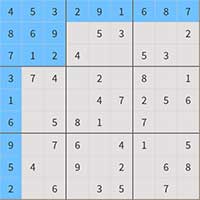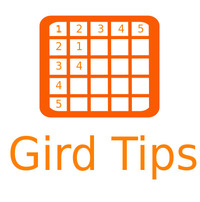How to play Sudoku online for free with Sudoku tips?
1. Sudoku Grid Basics
- A Sudoku grid has 81 cells divided into nine 3×3 subgrids. Your task: fill empty cells with numbers 1-9 without repeating digits in any row, column, or subgrid.
2. Three basic rules of Sudoku

- Row Rule: No duplicates in any horizontal line.
- Column Rule: Each vertical line must contain 1-9.
- Subgrid Rule: Every 3×3 box needs all nine digits.
3. Free online Sudoku tips tool

Notes Mode: Write down the possible values in the grid.

Eraser: Delete the wrong numbers

Hint value: Reveals one correct number when stuck.

Single Tips: Tips for a unique solution for a single grid, column, or row

All Tips: All space candidate number prompts, this prompt will automatically turn on Notes Mode

Gird Tips: The number of candidate grids, columns, and rows associated with the current empty grid. Using this prompt will enable Notes Mode by default.

Cancel Tips: Cancel all Sudoku Tips candidate number or unique value hints
How to ensure that Sudoku has unique values?
In 2012, mathematicians proved that a valid Sudoku requires at least 17 pre-filled numbers. Puzzles with fewer numbers may have multiple answers.
What determines the difficulty of Sudoku?
The number of clues given determines the difficulty level of the Sudoku puzzle.
- Easy (39-47 clues): Ideal for learning scanning techniques.
- Medium (30-38 clues): Introduces “pencil marking.”
- Hard (26-29 clues): Requires advanced tactics like X-Wing.
- Expert (17-25 clues): Demands full logical deduction mastery.
Tips for playing free online sudoku
There are two general techniques for playing Sudoku: Naked Singles、Candidate Numbers
Sudoku is a number puzzle game that does not require any arithmetic skills; it relies solely on reasoning and logic.
The “Naked Singles” allows players to begin solving the puzzle immediately upon receiving it, without the need for any guessing or auxiliary tools. Key techniques under the Naked Singles include:
- Unique Candidate: Identifying numbers that can only fit in one specific cell.
- Basic Elimination: Systematically eliminating numbers that cannot fit into certain cells.
- Block Elimination: Reducing candidates within a specific block or grid.
- Remaining Candidates: Determining the only possible number left for a cell after other options are removed.
- Rectangle Elimination: Utilizing the arrangement of numbers to eliminate candidates.
- Unit Elimination: Eliminating candidates based on the values in the same row, column, or block.
- Remainder Test: Checking the remaining candidates for validity based on existing numbers.
Using the Candidate Number Method requires creating a list of possible candidates for each empty cell. Through various logical deductions, players can gradually eliminate impossible candidates to reach a solution. This method is particularly effective for more complex Sudoku puzzles, but it is less direct than the Intuitive Method since it necessitates preparing a candidates list.
In practice, it is often beneficial to begin with the Intuitive Method until it can no longer be applied, at which point the Candidate Number Method can be employed. The process of using candidate numbers involves careful elimination; players must ensure that they accurately identify which candidates can be safely eliminated, as incorrect deductions may necessitate restarting the puzzle.
The rise of online Sudoku has made maintaining candidate lists far easier, thanks to advanced digital tools designed for this purpose.
Key Candidate Numbers Sudoku tips:
Almost all Sudoku Tips are based on identifying the correct number by knowing the unique number and the candidate number. Here are some common Sudoku Tips used by beginners and experts.
- Singles Candidature: When a cell has only one possible number, that number can be placed directly in that cell. This is known as a naked single.
- Hidden Singles Candidature: A number can be placed in a cell if it is the only cell in a row, column, or box that can accommodate that number, even if the cell has other candidates.
- Naked Pairs: If there are two cells in a row, column, or box that can only contain the same two numbers, those two numbers can be eliminated from all other cells in that row, column, or box.
- Hidden Pairs: If two numbers appear only in two cells of a row, column, or box, they can be confirmed as the only candidates for those cells, even if those cells have other candidates.
- Naked Triples: Similar to naked pairs, if there are three cells in a row, column, or box that can only contain the same three numbers, those numbers can be eliminated from all other cells in that row, column, or box.
- Hidden Triples: If three numbers appear only in three cells of a row, column, or box, they can be confirmed as the only candidates for those cells, even if those cells have other candidates.
- X-Wing: This technique involves a number appearing in two rows and two columns in such a way that they form an “X” shape. This pattern allows you to eliminate that number from other cells in those rows and columns.
- Swordfish: Similar to the X-Wing, but it involves three rows and three columns. This method identifies a pattern that allows for the elimination of candidates.
- Forcing Chains: This technique uses logical reasoning to determine the necessity of certain candidates. If selecting a particular candidate leads to an inevitable outcome, other options can be eliminated based on that inference.